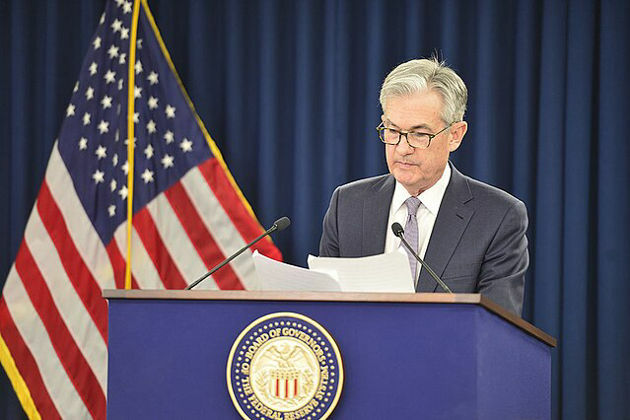A Note on Waves and String Theory for "Beijing Bulletin"
Beijing Bulletin
05 Jul 2023, 05:30 GMT+10
N.B. It is my hope, esteemed readers, that I am forgiven for my lack of knowledge of the Mandarin Chinese language. I am confident that my presentation of this note in English will be rejected by the editors if this aspect of my presentation is in contravention of the intentions of the managing editor.
What is antimatter, and how does it appear in superstring theory? If you have been following my series in "Toronto Telegraph," you will have noticed how much I emphasize the importance of the Dirac equation. The reason for this emphasis is that Dirac's combination of quantum and relativistic effects in a single equation is of direct consequence to superstring theory. Superstring theory is a family of theories of quantum gravity that propose to extend the Dirac equation to a quantum-mechanical equation that can explain how space exists at all. One key tool in this odyssey is the Polyakov action on two-dimensional conformal field theory. This action explains how strings propagate like waves in a much more general sense than Dirac was capable of discerning. It leads to the AdS/CFT correspondence, which is a conjectured equivalence between a string theory in a certain curved spacetime (Anti-de Sitter space) and a quantum field theory on the boundary of that spacetime.
The resulting theory must make sense of antimatter in a systematic, mathematical way. Antimatter is a type of matter that is composed of antiparticles, which are the counterparts of the particles that make up normal matter. For every type of particle, there is a corresponding antiparticle that has the same mass but the opposite charge. For example, the antiparticle of an electron (which has a negative charge) is a positron, which has a positive charge. The existence of antimatter was first predicted by Dirac in 1928, when he was trying to reconcile the concepts of quantum mechanics with the theory of special relativity. The equations that he developed, now known as the Dirac equations (covered in my "Toronto Telegraph" piece) predicted the existence of particles that had the same mass as electrons but the opposite charge. These particles, which were later discovered and named positrons, were the first falsifiable evidence of the existence of antimatter.
Quantum field theory understands antimatter in terms of excitations that propagate as waves through abstract spaces. Each type of particle corresponds to a specific quantum field, and antiparticles are understood as excitations of the same field but with opposite quantum numbers (like charge).The appearance of antiparticles is a direct consequence of the principles of quantum mechanics and special relativity. The creation and annihilation of particle-antiparticle pairs is a common occurrence, and is represented mathematically by creation and annihilation operators that act on the quantum field in question. When a creation operator acts on the vacuum state, it creates a particle, and when an annihilation operator acts on a particle state, it annihilates the particle and returns the field to the vacuum state.
Unfortunately, quantum theory is not immediately expressible in string-theoretic terms. Wave mechanics via the Polyakov action provides a translation mechanism. Permit us to explore what I intend in greater depth. In string theory, particles are understood as different vibrational modes of one-dimensional strings. Antiparticles correspond to strings vibrating in a different mode. Unlike in quantum field theory, where particles and antiparticles are treated as distinct entities, in string theory, particles and antiparticles are conceived as two different states of the same fundamental string. String field theory is an attempt to formulate string theory in a way that's analogous to how quantum field theory describes particles. The string field at each point in this space encodes the information about all the possible string states (i.e., all the vibrational modes of the string) at that point. The string field is a functional, which means that it's a "function of functions": it takes a string configuration (which is a function describing the shape of the string) and gives a complex number. Interactions between strings, which in the standard formulation of string theory are described by complicated processes involving the topology change of the string worldsheet, are in string field theory described by a cubic vertex in the string field action.
This is similar to how interactions between particles are described in quantum field theory by vertices in a Feynman diagram. In quantum field theory, each type of particle corresponds to a field permeating space, and particles are thought of as excitations or "quanta" of these fields. String field theory is much more complex than quantum field theory, both conceptually and technically. This is due in part to the infinite number of degrees of freedom involved in the string field (corresponding to the infinite number of modes of vibration of the string), and to the difficulties in defining and computing the string field action, which is known as the Polyakov action. This action is expressed by the integral over the two-dimensional worldsheet swept out by the string of a quantity that depends on the metric of the worldsheet and the embedding of the worldsheet in spacetime. This action is also conformally invariant, meaning it doesn't change under a conformal transformation, which is a transformation that locally preserves angles but not necessarily distances.
The conformal invariance of the Polyakov action leads to a condition known as the Virasoro constraint, which is crucial in eliminating unphysical states ("ghost" states with negative norm) from the spectrum of string vibrations. By applying the principles of quantum mechanics to the Polyakov action, you can derive the spectrum of string vibrations, which corresponds to the different types of particles in string theory. The Polyakov action naturally incorporates the effects of gravity. This is because it's formulated in terms of the metric of spacetime, which in the context of general relativity encodes the gravitational field. In the context of quantum field theory, the Polyakov action is less central. However, the techniques used to quantize the string using the Polyakov action are closely related to the methods of two-dimensional conformal field theory, which has wide applications in many areas of theoretical physics beyond string theory.
Please see the citations in the "Toronto Telegraph" series regarding the great equations for more information. I believe it is accessible via Weibo. Share
Share
 Tweet
Tweet
 Share
Share
 Flip
Flip
 Email
Email
Watch latest videos
Subscribe and Follow
Get a daily dose of Beijing Bulletin news through our daily email, its complimentary and keeps you fully up to date with world and business news as well.
News RELEASES
Publish news of your business, community or sports group, personnel appointments, major event and more by submitting a news release to Beijing Bulletin.
More InformationTechnology
SectionTikTok gets US reprieve as Trump grants 90-day extension
WASHINGTON, D.C.: President Donald Trump has granted TikTok another reprieve, extending the deadline for its Chinese parent company,...
Amazon’s Zoox unveils plan to build 10,000 robotaxis a year
HAYWARD, California: In a significant step toward its commercial debut, Amazon-owned Zoox has unveiled its first factory dedicated...
Trump family enters telecom with branded phone, mobile service
NEW YORK CITY, New York: The Trump family has unveiled a new venture in the telecom sector — and it's drawing as much scrutiny as it...
Bajaj Markets Helps Users Choose the Right Credit Card in 2025
HT Syndication Pune (Maharashtra) [India], June 23: Bajaj Markets, a leading digital financial marketplace, is revolutionising how...
Oman to introduce first income tax for high earners from January 2028
New Delhi [India], June 23 (ANI): It is for the first time that Oman has announced the introduction of personal income tax on high-income...
Russian companies see India as base for setting up IT teams: Ashwini Vaishnaw
St Petersburg [Russia], June 22 (ANI): Union Minister Ashwini Vaishnaw said many Russian companies are considering India as a base...
Business
SectionU.S. stocks gain ground as investors shrug off Mideast concerns
NEW YORK, New York - U.S. stocks made strong gains on Monday, brushing off concerns Donald Trump's surprise ambush of Iranian nuclear...
U.S. bombs Iran nuclear sites, investors eye oil and safe havens
NEW YORK CITY, New York: The U.S. bombing of Iranian nuclear sites has cast a shadow over global markets, with investors bracing for...
Farmers exploit loophole in Amazon soy deal to clear rainforest
SANTAREM, Brazil: As Brazil cements its position as the world's top soy exporter, a new wave of deforestation is spreading across the...
Europe eases rates as Fed holds and Trump threatens tariffs
ZURICH, Switzerland: A wave of central banks across Europe surprised markets last week by lowering interest rates, responding to easing...
Federal Reserve chief weighs next move as economic outlook wavers
WASHINGTON, D.C.: The U.S. economy is performing reasonably well, but Federal Reserve Chair Jerome Powell faces a difficult decision...
TikTok gets US reprieve as Trump grants 90-day extension
WASHINGTON, D.C.: President Donald Trump has granted TikTok another reprieve, extending the deadline for its Chinese parent company,...












